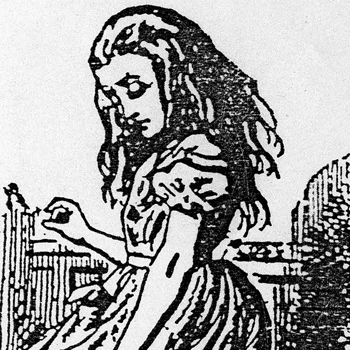Communication Design
Batch 1990-1992
(7 items)
Communication DesignBatch 1990-1992
(7 items)
(7 items)
by Anirudha Joshi
With the advent of video, the medium of cinema has truly reached the masses. Filmmaking was initially the monopoly of big film companies and skilled professionals. But the prices of equipment have dropped phenomenally, and unlike film, video tapes are reusable. As a result, any small institution, which perhaps earlier couldn't afford even a film projector, can now make video films of its own. As happened with photography, amateurs are making their way into filmmaking as well. The result is a jump in the number of films produced every year. Unfortunately, the lack of professional skills shows easily in some of these films.
Among the amateurs, there are a large number of teachers who have turned filmmakers. They are interested in documenting lectures by experts on the topics of their interest. The phenomenon of using the powerful medium of cinema for education is not very new. What is new is the filmmaker.
Editing is the most unnoticed department in filmmaking, unless it is bad editing. In fact, a well-edited film is one in which the cuts are least visible. So it becomes difficult for an amateur film maker to observe good cuts without assistance.
The aim of this project is to identify certain basic editing techniques that are specifically applicable to educational films and document them on video for easy identification.
by Amrit Kaur
Unlike metaphysics, the science of physiology explores the living processes of an organism. With the help of exploration in this venue, one understands the underlying chemical and physical changes and the structural peculiarities of the whole system. Hence, to have an insight into the working processes of a living organism, knowledge of chemistry, biology, microscopic anatomy, etc., becomes very inter-disciplinary, and the relationship of one discipline to the other becomes very complex. This interdisciplinary junction is located on the plane of ERGONOMICS.
Ergonomics is coined from two Greek words: "ergos" (work) and "nomos" (natural laws). So on the basis of work measurement, studies are done on the energy spent by the organism while in action. The dimensions of the human body and its segment proportions have apparently always been of much interest to physicians, anatomists, and artists, too. Marco Polo described his travels around the earth in the 13th century, evoking particular interest with his descriptions of various body sizes, regions, and physiology relationships. Even the artist Leonardo da Vinci studied human body anatomy and basic structure to get the right sense of human proportions.
by Dinesh Katre
The purpose behind taking up this subject as a research project was to evaluate this medium in terms of communication, its potential, and its versatility. The advancement of technology has offered us a number of mediums, like video, audio-visual photography, interactive computer programmes, etc., through which one can communicate with the masses. The comic book is as flexible as the other mediums and is largely accepted by people.
Education through entertainment
It is a new thought coming up these days. Lots of educational films are made, and experimentation is being done. Compared with television, a comic book is the cheapest medium that an Indian kid can easily afford. Though some publications have tried to make it more informative, nobody has used it for truly educational purposes. This report attempts to focus on its hidden potential and generalised principles.
by Geeta A Joshi
Bombay- the name conjures up a juxtaposition of contrasting images. It is the city of the affluent and the poor, the skyscrapers and the slums, old style Gothic architecture and new style buildings. It is a city with vast ethnic diversity and a truly cosmopolitan population with different customs and languages. It is a city that accepts and welcomes all but is at the same time indifferent and respects privacy. It is the hub of industrial activity and the commercial capital of the country. It is a city in which the businessman, the artist, the worker, and the intellectual feel at home.
The capital of Maharashtra State, 'Mumbai, as the city councillors would like it to be known to the world today in acknowledgement of its patron goddess 'Mumbadevi' is affluent, modern, densely urbanised, and one of India's fastest-growing cities. Bombay is a gritty, impossible, and unforgetable place. Bombay is a mixture of different communities. It is a one-of-a-kind city with a cosmopolitan personality. It is an image of intense activity. It is a city ever in search of modernity but never forgetting its past. It is a city of towering skyscrapers and overcrowded slums. It is a city of bursting crowds and rustling traffic, yet it is a city of great orderliness. Child beggers, pavement sleepers, sprawling urban slums, noise, tangled traffic, skyscrapers, fashionable apartment blocks The very poor, who have emigrated from villages in the surrounding regions to seek a better fortune, and the very rich, including merchants, industrialists, and film stars It is also, in a very special sense, India's most cosmopolitan city. The Indian subcontinent is home to people as diverse, ethnically and in terms of languages and customs, as all the countries of Europe put together, and no city is more representative of this diversity than Bombay, to which people from almost all parts of the country have gravitated. The charm of Bombay lies in the cheerful warmth with which it accepts and welcomes all. It is a city that respects your privacy and your right to live as you please.
by Joglekar Rajendra Shrikrishna
Last year, the methodology of documentation using slides, lectures, and audiovisuals was created and used for the personal presentation of my first project. Previously, I used to show reference drawings and charts with the help of personal speech without audio tape. But it was not known how many people had perceived it either fully or partially. This was due to my weakness for speaking. I therefore tried to show some references or demonstrations, with short text without slides or photographs so that the auditor could approximate my speech using their imagination.
Later on in November, the final presentation of my second project, Yoga, was differently planned. It was a slide lecture, synchronised with audio tape, and flopped on the screen. Listening to the recording of the yoga lecture, along with the slide demonstration, became popular with the audience. In perceiving the image, I showed yoga with its important features, the visuals, and its applications, with a wide range of designs, to the audience, especially to the chairman, professors, and students. That was the first time the methodology was used, due to the hindrance of speech, and then it was thought that this primary methodology could be useful to others, irrespective of faculty, when they deliver their lecture.
by Neeta Mugwe
In India, publishing and printing are burgeoning in terms of languages, circulation, complexity, and quality. Print products on paper continue to increase in spite of television, video, and computers. In industries today where technology plays an important role, precision is in the lead. In a publication design, the placement of the various components that constitute the design and giving importance to the right elements are important.
Grid forms the foundation of these varied publication designs, giving them structure and form. Grid can be defined broadly as the systematic division of space to incorporate the various elements of a design layout. If the grid is used with skill and sensitivity, it can lead to the production of handsome and effective pages, and it can give the overall design a sense of cohesion and continuity that has a distinctively unifying effect.
In this project, an attempt has been made to analyse a few Marathi magazines of various natures, dealing with different subjects, to study the kinds of grids used and the stylesheet followed in these regional magazines. An analysis has been made, and some points have been noted as to the methodology followed in planning the grids for these magazines.
The second part of this project deals with designing grids for E4-sized pages. An attempt has been made to convert a few of the existing magazines into this Ed-size grid to see its capabilities. Looking forward to various modes of technology, the grid has been designed with the help of computers (Apple Macintosh and PageMaker). It has been seen that a great deal of paper wastage occurs in obtaining the ad size pages as the Indian paper sizes differ from the international paper sizes. Therefore, with the use of resized paper and the resulting size adjustments, great damage is caused. Therefore, publishers today use the existing A4 size grid for the sizes obtained without paying much heed to the damage done.
by R Venkatesh
When people are asked what they mean by "space," they usually answer in terms of vastness, space travel, extending out from the earth's surface, wide open vistas, etc. This is a natural response.
There is another prosaic use of the word space. It is used to illustrate such phrases as make space for me', is there any space?', watch this space!', etc. The word is usually associated with some activity or another.
These two notions of space are directly related to each other since people, when asked "What do you think space is?" answer with the more intangible notion of vastness because they are being asked for a description of something in isolation while it has always existed linked with an associated activity such as gardening, sitting around, parking a car, advertising, and so on.
A third way of thinking about space is by way of measurement, which we come to control as we grow up. This is in response to the complexity of relationships that he perceives. He defines spaces. For instance, surfaces are defined as two-dimensional spaces made up of multiple distances, as are volumes.
In the end, the word 'space' has always implied some action that is possible. In the present-day world, the possibilities for actions are so diverse and of such different kinds that we have to realise that no one definition will do for 'space'.






